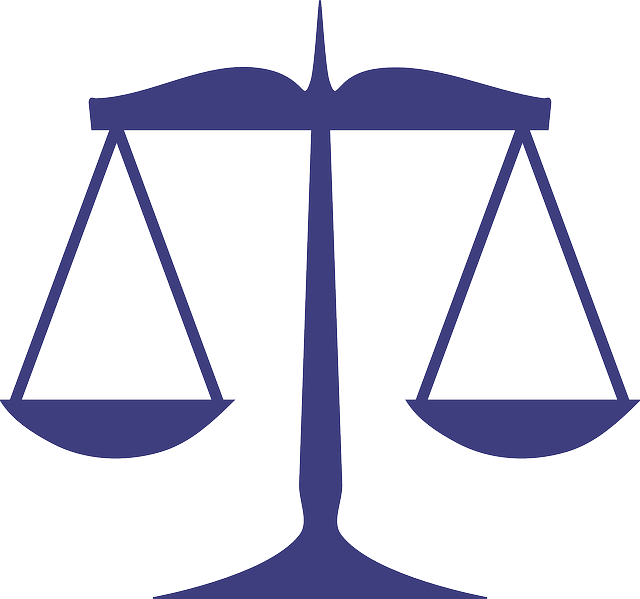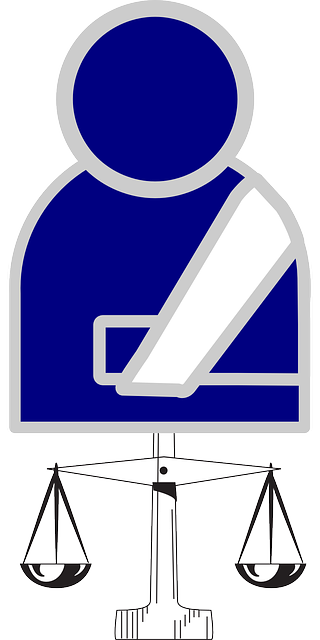Category: DHS Child Welfare Legal Guide Oregon
DHS Child Welfare Legal Guide Oregon: A Comprehensive Overview
Introduction
In the intricate web of child welfare systems, ensuring legal protection and guidance is paramount for the well-being of children and youth. The DHS Child Welfare Legal Guide Oregon stands as a beacon of knowledge, offering invaluable insights into navigating the complex legal landscape surrounding child protection in the state of Oregon. This comprehensive guide is designed to empower professionals, advocates, and policymakers involved in child welfare by providing a detailed roadmap for understanding and adhering to legal requirements. This article delves deep into every aspect of this guide, exploring its impact, global relevance, challenges, and future prospects, ultimately underscoring its significance in the ongoing quest for optimal child welfare outcomes.
Understanding DHS Child Welfare Legal Guide Oregon
The DHS Child Welfare Legal Guide Oregon is a meticulous compilation of laws, regulations, policies, and best practices specific to child welfare cases in Oregon. It serves as a one-stop resource for professionals within the Department of Human Services (DHS) and other agencies involved in child protection, adoption, foster care, and related services. The guide’s primary objective is to ensure that all parties involved in these processes are well-informed about their rights, responsibilities, and obligations, thereby fostering fairness, transparency, and positive outcomes for children.
Core Components:
- Legal Framework: Outlines the state and federal laws governing child welfare practices, including the Children’s Safety Act, which establishes procedures for reporting suspected abuse, conducting investigations, and providing services to vulnerable children.
- Regulatory Compliance: Details the specific regulations that DHS and its partners must adhere to, ensuring consistent application of legal standards across the state.
- Policy Guidelines: Provides a framework for interpreting and implementing laws, offering practical guidance on various aspects of child welfare cases, such as removal decisions, placement options, and case planning.
- Procedures and Forms: Includes standardized forms, checklists, and step-by-step procedures to streamline case management, documentation, and communication.
- Case Management Best Practices: Offers strategies for effective case management, emphasizing the importance of cultural competency, family-centered practices, and collaborative decision-making.
Historical Context:
The development of the DHS Child Welfare Legal Guide Oregon traces back to the late 20th century when significant reforms in child welfare practices led to a need for standardized legal guidance. Oregon, like many other states, experienced a shift from institutional care to family-based services, emphasizing the importance of maintaining family connections and cultural identities. This evolution demanded a nuanced understanding of indigenous and diverse communities’ unique needs and rights within the child welfare system.
Over time, various stakeholders, including legal experts, child welfare professionals, and community advocates, contributed to shaping the guide. It has undergone multiple revisions to incorporate changes in laws, regulations, and best practices, ensuring its relevance and accuracy.
Global Impact and Trends
The DHS Child Welfare Legal Guide Oregon extends its influence far beyond state borders, setting a benchmark for child welfare legal frameworks worldwide. Its principles and practices have resonated internationally, particularly in regions with similar cultural and social contexts.
Key Trends:
- Cultural Competency: The guide’s emphasis on cultural sensitivity and the incorporation of indigenous perspectives have inspired other jurisdictions to prioritize these aspects in their child welfare policies.
- Family-Centered Approach: Oregon’s success in implementing a family-centered model has encouraged countries with high rates of foster care placement to adopt similar strategies, focusing on maintaining familial connections whenever possible.
- Collaboration and Multi-Agency Partnerships: The guide promotes collaboration among various agencies, a trend gaining global recognition as an effective way to coordinate services and support for children and families.
Regional Adaptations:
While the core principles remain consistent, local contexts shape how the guide is applied in different regions:
| Region | Adaptation | Example |
|---|---|---|
| North America | Emphasis on Indigeneity | Canada has adapted the guide’s cultural competency guidelines to address the unique needs of First Nations children, incorporating traditional healing practices into child welfare services. |
| Europe | Legal Harmonization | The European Union’s efforts to harmonize child protection laws across member states have drawn inspiration from Oregon’s comprehensive legal framework. |
| Asia | Cultural Sensitivity Training | Japan has implemented mandatory cultural sensitivity training for child welfare workers based on Oregon’s model, fostering a more inclusive approach to serving diverse communities. |
Economic Considerations
The economic implications of the DHS Child Welfare Legal Guide Oregon are multifaceted, impacting various sectors and contributing to the overall well-being of the state’s economy.
Market Dynamics:
- Service Sector Growth: The demand for specialized child welfare services has led to the expansion of non-profit organizations, private agencies, and government departments focused on providing support to at-risk children and families.
- Training and Education: The guide encourages ongoing professional development, fostering a skilled workforce in child welfare. This, in turn, enhances service quality and reduces long-term costs associated with ineffective practices.
Investment Patterns:
- Government Funding: Oregon’s commitment to evidence-based practices has resulted in strategic investments in child welfare infrastructure, including training programs, technology solutions, and community-based initiatives.
- Private Sector Engagement: The guide’s emphasis on partnership and collaboration encourages private investments in child welfare services, particularly through funding initiatives and pro bono legal support.
Economic Impact:
The DHS Child Welfare Legal Guide Oregon contributes to economic stability by:
- Reducing Recidivism: Effective case management and legal support reduce the risk of children entering the justice system, saving taxpayer dollars and minimizing long-term social costs.
- Supporting Family Stability: By focusing on family preservation and successful reunifications, the guide helps maintain familial connections, reducing the need for costly out-of-home placements.
- Promoting Community Resilience: Strong community engagement and cultural competency, as encouraged by the guide, build resilient communities that can better support their most vulnerable members.
Technological Advancements
Technology plays a pivotal role in modern child welfare practices, enhancing service delivery and improving outcomes for children and families. The DHS Child Welfare Legal Guide Oregon has embraced technological innovations while ensuring they align with legal and ethical standards.
Significance of Technology:
- Data Management and Analysis: Advanced data analytics enables predictive modeling, helping caseworkers identify families at risk and allocate resources more efficiently.
- Telehealth and Virtual Services: During the COVID-19 pandemic, virtual platforms became essential for maintaining service continuity, especially in remote areas.
- Digital Case Management Systems: These systems streamline documentation, improve communication, and facilitate collaboration among agencies, ultimately enhancing case management efficiency.
Future Potential:
- Artificial Intelligence (AI) and Machine Learning: AI can automate routine tasks, allowing caseworkers to focus on complex decision-making. Machine learning algorithms can analyze vast data sets to identify trends and patterns, supporting evidence-based practice development.
- Blockchain for Record-Keeping: Implementing blockchain technology ensures secure, tamper-proof record-keeping, enhancing transparency and accountability in the child welfare system.
- Digital Literacy Programs: As technology advances, there is a growing need for digital literacy initiatives to ensure that both professionals and families have access to and can effectively utilize available resources.
Policy and Regulation
The legal framework guiding DHS Child Welfare Legal Guide Oregon is underpinned by a robust network of policies, regulations, and legislative acts that collectively shape the state’s child welfare system.
Key Policies and Regulations:
- Children’s Safety Act (CSA): This comprehensive act outlines the procedures for reporting suspected abuse, conducting investigations, and providing services to at-risk children. It emphasizes early intervention, family support, and safety as primary goals.
- Oregon Administrative Rules (OAR) Chapter 413: These rules provide detailed guidelines for DHS and its partners, covering various aspects such as case planning, placement decisions, and youth transition services.
- Federal Child Welfare Laws: The guide must adhere to federal laws like the Adoption and Safe Families Act (ASFA), which sets standards for permanency planning and adoption procedures.
Legislative Framework:
The Oregon Legislature plays a crucial role in shaping child welfare policy by:
- Enacting Laws: Legislators pass laws addressing specific issues, such as trauma-informed care, youth involvement in decision-making, and cultural competency training requirements for child welfare professionals.
- Approving Budgets: Annual budget allocations determine the resources available for child welfare services, including funding for training, technology, and community-based programs.
- Oversight and Accountability: Legislative committees conduct regular reviews of DHS operations, ensuring compliance with laws and regulations and identifying areas for improvement.
Challenges and Criticisms
Despite its comprehensive nature, the DHS Child Welfare Legal Guide Oregon faces challenges and criticisms that require continuous improvement and strategic responses.
Main Challenges:
- Rapidly Changing Laws: Child welfare laws are subject to frequent changes at both the state and federal levels, necessitating regular updates to the guide to ensure accuracy and relevance.
- Resource Allocation: Adequate funding for child welfare services is an ongoing concern, impacting service quality and accessibility. Balancing the need for specialized services with budget constraints presents a significant challenge.
- Cultural Competency in Practice: While the guide emphasizes cultural sensitivity, ensuring that these principles are consistently applied across diverse communities remains a work in progress.
- Technological Integration: Keeping pace with technological advancements while maintaining data privacy and security is a complex task, requiring continuous training and robust cybersecurity measures.
Proposed Solutions:
- Regular Review and Update: Establish a dedicated team to review and update the guide periodically, ensuring it remains current with legal developments and best practices.
- Collaborative Policy Development: Engage stakeholders from diverse backgrounds in policy development to address cultural competency gaps and ensure culturally responsive services.
- Invest in Technology Training: Provide ongoing professional development opportunities for child welfare professionals to enhance their skills in utilizing new technologies while maintaining ethical standards.
- Advocate for Funding: Collaborate with policymakers and community leaders to secure adequate funding for child welfare initiatives, prioritizing investments that evidence show will yield long-term benefits.
Case Studies: Successful Applications and Lessons Learned
Real-world applications of the DHS Child Welfare Legal Guide Oregon offer valuable insights into its effectiveness and potential for positive change. These case studies highlight successful outcomes and the strategies employed to navigate complex child welfare challenges.
Case Study 1: Family Preservation Program in Rural Oregon
In a rural county with limited resources, DHS implemented a family preservation program inspired by the guide’s emphasis on family-centered practices. The initiative focused on providing intensive in-home services to at-risk families, aiming to prevent unnecessary removals and promote stable family environments.
Results:
- Reduced Removal Rates: Within two years, the program successfully reduced removal rates by 35%, keeping more children with their parents or extended family members.
- Improved Family Stability: Families reported enhanced coping skills and problem-solving abilities, leading to better parenting practices and improved family dynamics.
- Cost Savings: The program’s success resulted in significant cost savings for the county, as preventive services proved more economical than out-of-home placements.
Lessons Learned:
- Community Collaboration: Building strong partnerships with local community organizations and cultural leaders was crucial for gaining trust and accessing hard-to-reach families.
- Cultural Competency Training: Providing specialized training to caseworkers on cultural competency improved their ability to connect with families from diverse backgrounds.
Case Study 2: Virtual Youth Court Program
During the COVID-19 pandemic, a pilot program introduced virtual youth court sessions to involve involved youth in decision-making processes while maintaining public health guidelines.
Results:
- Increased Youth Engagement: The program achieved high levels of youth participation, with over 80% of eligible youth attending virtual court sessions.
- Improved Outcomes: Young people reported feeling more empowered and invested in their cases, leading to higher rates of successful case closure and positive outcomes.
- Cost Efficiency: Virtual courts reduced travel costs and allowed for more efficient use of resources, particularly in rural areas with limited transportation options.
Lessons Learned:
- Technological Adaptability: Rapidly adapting to new technologies was essential for maintaining service continuity during a crisis.
- Youth Centered Approach: Involving young people actively in their cases fostered a sense of responsibility and ownership, contributing to improved outcomes.
Future Prospects: Emerging Trends and Strategic Considerations
As the DHS Child Welfare Legal Guide Oregon continues to evolve, several emerging trends and strategic considerations shape its future trajectory, ensuring its relevance and effectiveness in addressing evolving child welfare challenges.
Potential Growth Areas:
- AI and Data Analytics: Advancing AI capabilities will enable predictive modeling, enhancing risk assessment and resource allocation.
- Cultural Competency and Diversity: Increasing diversity among child welfare professionals and fostering cultural competency will be crucial for serving Oregon’s diverse communities effectively.
- Youth Engagement: Involving young people in decision-making processes, as demonstrated by the virtual youth court program, holds promise for improving outcomes and promoting positive development.
Emerging Trends to Watch:
- Telehealth and Virtual Services: As technology advances, virtual platforms will become even more integral to child welfare services, especially in rural and underserved communities.
- Data Privacy and Security: With increasing data collection and utilization, ensuring robust cybersecurity measures is vital to protect sensitive information.
- Collaboration and Multi-Agency Partnerships: Expect further growth in collaborative initiatives involving various agencies, community organizations, and indigenous groups to strengthen the child welfare system.
Strategic Considerations:
- Continuous Professional Development: Investing in ongoing training for child welfare professionals will equip them with the skills needed to navigate technological advancements and cultural complexities.
- Cultural Responsivity Training: Enhancing cultural competency through comprehensive training programs should be a priority, ensuring that all children and families feel respected and supported.
- Data-Driven Decision Making: Utilizing data analytics to inform policy development and resource allocation will lead to more efficient and effective child welfare practices.
Conclusion: Navigating the Future of Child Welfare
The DHS Child Welfare Legal Guide Oregon stands as a beacon of hope and guidance in the complex landscape of child welfare, offering a roadmap for professionals and policymakers to navigate challenges and foster positive outcomes for children and families. This comprehensive guide has not only shaped legal practices but also influenced global trends, demonstrating its impact on a national and international scale.
As technology advances, cultural dynamics shift, and new laws emerge, the guide must continue to evolve to remain a powerful tool in Oregon’s child welfare system. By embracing emerging trends, investing in training, and fostering collaboration, Oregon can ensure that its child welfare services remain responsive, effective, and equitable. The future of child welfare lies in continuous improvement, cultural sensitivity, and a commitment to keeping children safe and thriving within their families and communities.






![… [.. […] … [ … … … … … … … … … … … … … … … … … … … … … … … … … … … … … … …](https://laneexplorer.com/wp-content/uploads/2025/06/child-welfare-attorney-oregon-legal-cour-640x480-55902653.jpeg)


